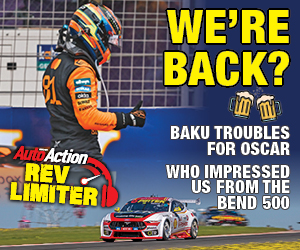50 YEARS OF AUSTRALIAN FORMULA FORD

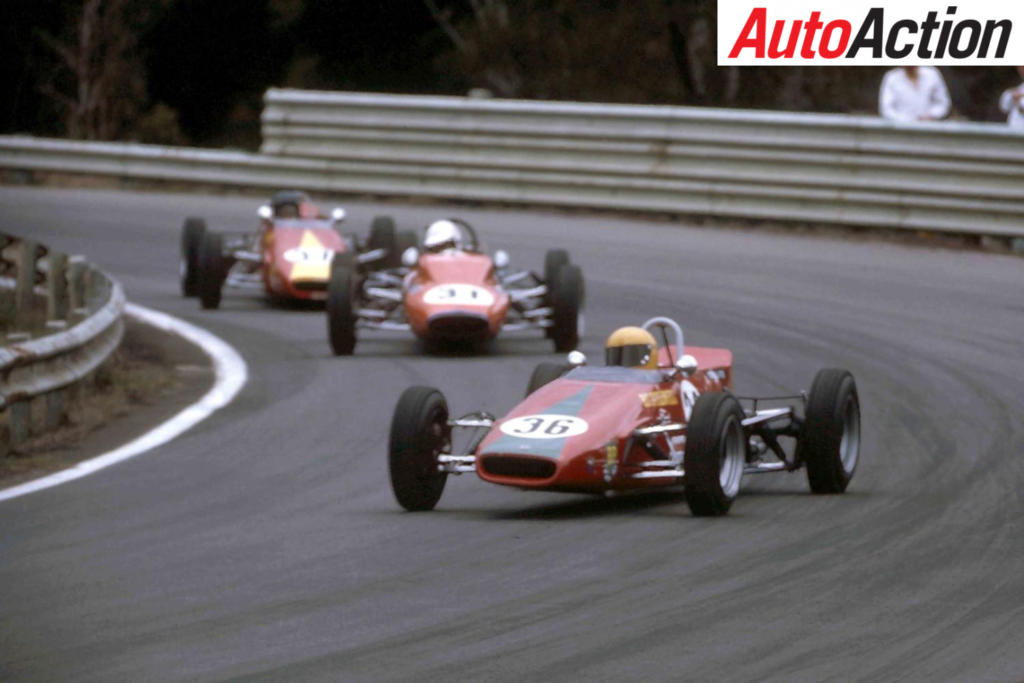
50 Years of Australian Formula Ford
THE AUSTRALIAN Formula Ford Series has created dozens of stars since the inaugural event in 1969.
By DAN MCCARTHY / Photos: AUTOPICS/INSYDE MEDIA/AUTO ACTION ARCHIVES
Mark Webber, Craig Lowndes, Larry Perkins, Russell Ingall, Jamie Whincup and Chaz Mostert are just a few of the many successful drivers who raced in the series.
The original Formula Ford series was established in England in 1967. Auto Action’s own Paul Harrington was involved with starting the British series and worked alongside Ford to create an Australian championship.

Russell Knight won the first-ever Formula Ford race at Sandown in 1969
It took just two years, and on the 25th of November 1969 the first Australian Formula Ford race was held at Sandown International Raceway in Victoria, and was won by Richard Knight.
The following year in 1970 the first Formula Ford National Series was contested over six rounds across the states of Victoria and New South Wales. The series was won by Knight in a Bib Stillwell owned Elfin 600.
Mid-way through 1970 a young 20 year old by the name of Larry Perkins was driving his Formula Vee car at Calder Park.
“Graham Ritter, who was the manager of the Stillwell Racing outfit, asked me if I’d like to have a go at steering a Formula Ford,” Perkins told Auto Action.
“I obviously jumped at that because the Stillwell Formula Ford was the one they had with Richard Knight driving.
“Driving the Formula Ford after the Formula Vee I thought, ‘geez this has got some power,’ I do recall it vibrated a lot with the four cylinder engine, but it was great to drive,” he said.
“The second Elfin 600 Formula Ford arrived and the new car went to Richard and I drove his so called ‘old’ car. I don’t think there was much difference, to be honest, it was very nicely maintained,” he said.

Elfins then kept on winning with Larry Perkins in 1970
The six-time Bathurst 1000 winner recalled the atmosphere amongst all the teams and drivers was friendly despite the strong competition.
“It was very friendly and I don’t recall any amount of issues with any drivers, my memories were that it was a very strong field of Formula Fords from Victoria and New South Wales and close racing, I thought it was a really good category,” Perkins said.
In 1971 the series was renamed the Formula Ford Driver to Europe Series, in which the winner of the series would win a ticket to England.
Perkins became the lead driver of the Stillwell team in 1971 and went on to take the title at the end of that year, with his sights set on making it to Formula 1.
“At the time so many guys wanted to go to Europe and obviously I was one. There were guys that didn’t want to go to Europe too. I remember having conversations with Peter Brock and Colin Bond. I was staggered that they didn’t want to go to Europe and go racing,” he recalled.
“I didn’t have the slightest desire to stay in Australia and be king of the kids. I wanted to get to Europe where the real competition was and most of the guys in the Formula Ford around me, if they were on a career path, they wanted to do the same. The Formula Ford Driver to Europe Series was relatively well publicised even way back then and I thought this was just fantastic.”
Perkins travelled to England the following year and eventually made it to the pinnacle of motorsport, F1, making 11 Grand Prix starts in 1976 and 1977.
In the early years, the series was organised and run by the Light Car Club of Australia which was led by Harrington. The LCCA provided administrative support to the Formula Ford series throughout the 70’s.
The championship continued to grow throughout that period with drivers from different teams and using many chassis’ able to win the title.
In the late 80’s and early 90’s Formula Ford started to produce some of the Supercars stars that are still around the paddock today, such as Tomas Mezera, Mark Larkham, Russell Ingall and Cameron McConville.

Tomas Mezera leads the field through the esses at Sandown in his Reynard
Mezera, the 1988 Bathurst 1000 winner, felt that the Formula Ford Driver to Europe Series taught you a lot as a driver and was the obvious place to start racing.
“I came to Australia at Christmas in 1979, obviously I wanted to race and that was the best category to start in,” Mezera told Auto Action.
“It taught you about the car mechanically, about the setup of the car because you do everything on your own, you do the wheel alignment and everything.
“That teaches you good race craft, you can’t crash into people because you interlock the wheels and you go arse overhead.
“They used to have those one make series where people started, an AlfaSud series and Ford Laser series, (and) the kids kept crashing into each other all the time.
“Formula Ford was different. You were aggressive but you didn’t crash into each other too often, it was good,” he recalled.
Czechoslovakian born Mezera won the series in 1985 and felt that one of the strengths of the Formula Ford Series Down Under was the quality and quantity of the drivers in the series.
“It was always the most competitive series in those days when I was doing it, I always kept saying single seaters in Australia starts with Formula Ford and ends with Formula Ford. Because all the other categories they had were not as competitive,” Mezera said.
“It was such a light car, it wasn’t much different to Touring Cars on a power to weight ratio. Obviously it didn’t have as much grip as Formula 3s or other cars with the wings, but it is definitely the best category and I always say whoever can win in a Formula Ford can win in anything, it is just the matter of getting a good break.”
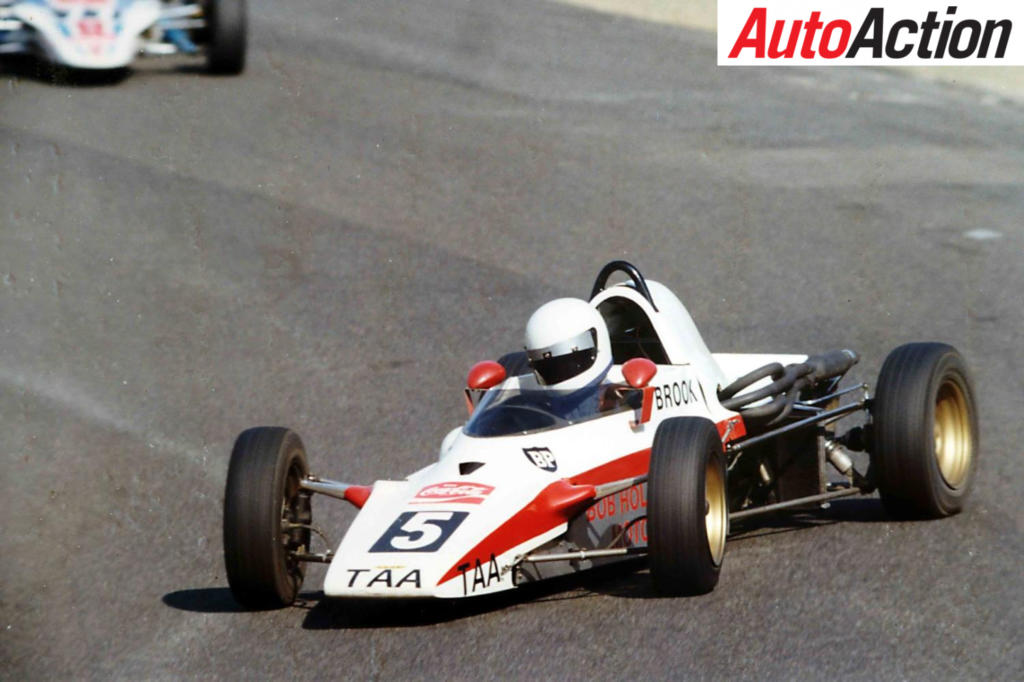
Stephen Brook won the title in 1980 aboard his British-built Lola
Margaret Hardy joined the Light Car Club and began working with the series in 1978, doing paper work for the category throughout the 80’s. In 1991 she became the administrator and was tasked with organising national series events, a role she remained in until 2013.
Hardy felt that the 90’s was the most competitive era, when the series changed name from the Formula Ford Driver to Europe Series to the Australian Formula Ford Championship.
“It was strong in the 90’s because it became a national CAMS championship in 1993 and that attracted a lot of karters. Traditionally in Europe the pathway had been karting and Formula Ford, Formula 3 and Formula 1 and that was the path we were trying to develop in Australia,” Hardy said to Auto Action.
“Although Formula 1 was a long shot, a lot of the Touring Car drivers at that time had started racing in Formula Ford and had been telling all the kids this is the way to go, (so) we were lucky enough to grab a lot of that market. None of it would’ve happened without Ford Australia, they were involved until 2012,” she recalled.
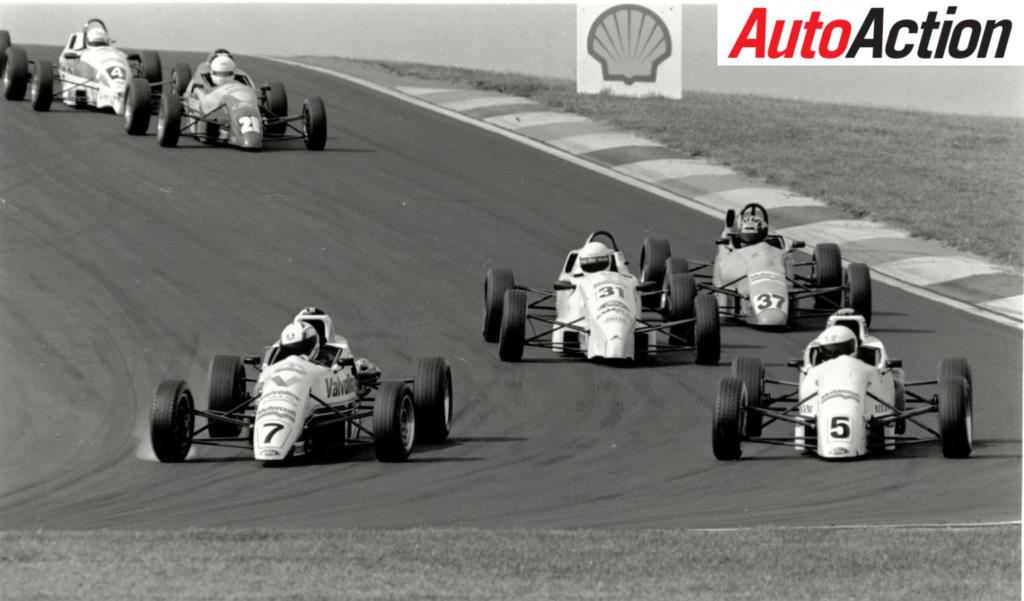
A huge number of Australian racing stars learned their craft in Formula Ford including Steven Richards and Craig Lowndes
Manufacturer Van Dieman dominated the championship from 1987 to 1997 and it became very difficult for anyone in another chassis to fight up the sharp end of the field. However this period also produced some of the best Supercars drivers of recent times. Craig Lowndes, Steven Richards, Garth Tander and Jason Bright all won the series in a Van Dieman RF93, RF94 or RF95.
“If you look at the guys who came through Formula Ford who made it into Supercars, the race craft you learn in Formula Ford helps you as a racing driver,” Bright explained to Auto Action.
“A lot of the Supercar teams back in the day were keeping an eye on Formula Ford and if you won the Formula Ford Championship, you were a pretty good shoe-in to get a chance in Supercars back in the late 1990s and early 2000s. That shows it was pretty well regarded as a category.
“I feel like we’ve always had a good Formula Ford series here in Australia and the year I won there were 16 new cars that came in the country that year, it was quite competitive and that was awesome to be a part of,” Bright said.
The series continued to go from strength to strength into the new millennium.
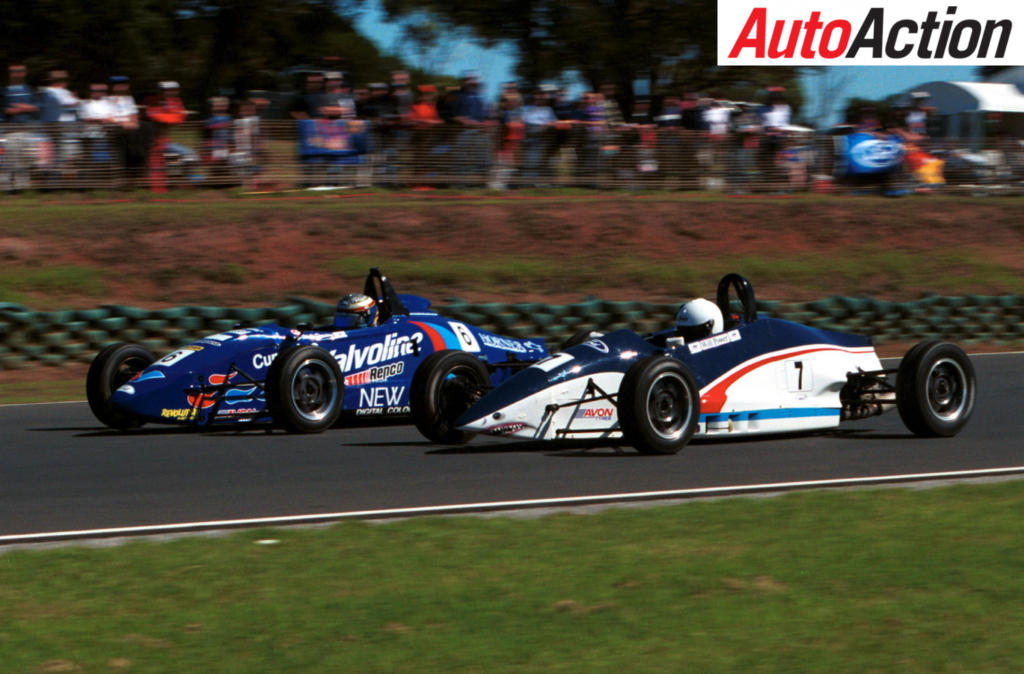
Will Davison and Will Power racing wheel to wheel
In 2001 Will Davison, Will Power and Jamie Whincup fought for the title in three different chassis. Davison drove a Van Dieman, Power a Stealth Van Dieman and Whincup a Mygale. Davison reflected on the incredibly intense Formula Ford Championship fight that year.
“They all had their strengths and weaknesses and Power really brought a big challenge to the championship. Some of the battles with Power in particular were pretty full on, the intensity was really high,” Davison explained to Auto Action.
“It was a great season, getting the championship at the end was a huge achievement,” he recalled.
“The race craft is everything. You have to be really strategic the way you set up your opponents, the slipstreaming is a huge part of the racing and wheel to wheel combat.
“It is a relevant breeding ground today. I think the ability to still be sliding around not playing with aerodynamics and using a manual gear shift and all of that only makes you a more complete driver,” he explained.
The mid 2000’s saw the platform of Formula Ford change a little, and the series was no longer used as the final step before Supercars as the highly successful second tier Super2 Series grew into that role.
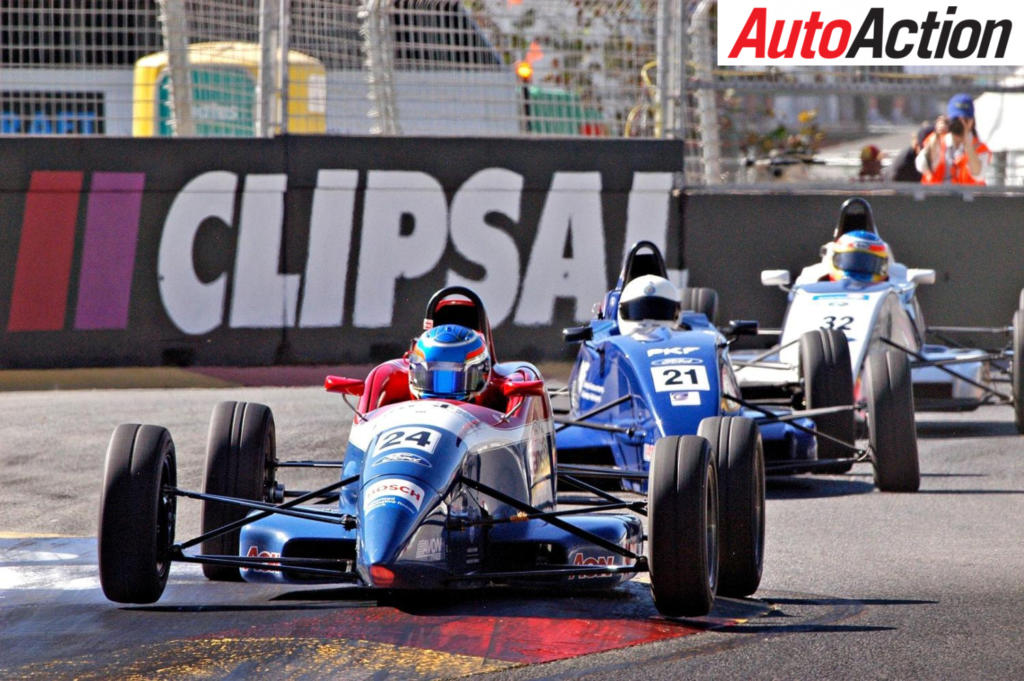
John Martin in Formula Ford before heading overseas
However Formula Ford was still a step out of karting and was also used as a platform to go overseas, as John Martin proved in 2006. “That was an amazing time for me. We won Vic State and won New South and next year we went into the national championship and won that in our rookie year, which was cool,” Martin told Auto Action.
“Towards the end of the year we went to England and did some British Formula Ford over there. We turned up and would’ve been happy to be in the top 10 and to walk away basically with a win on debut, that was crazy.”
In 2014 Formula Ford lost its championship status as CAMS turned its attention to the Formula 4 series.
John van Leeuwen was the chairman of the Formula Ford Association at this time and spoke to Auto Action about how it happened.
“When Formula 4 came along CAMS would no longer give Formula Ford national championship status. I got the call from Eugene Arocca and Mike Smith, and it was a joint telephone call,” Leeuwen recalled.
“They said they didn’t want Formula Ford to have national championship status and they were no longer going to give it because it was not relevant.
“They consigned us to just have a state series but we couldn’t have a national championship. We couldn’t use the word championship anymore, but we just called it the Australian Formula Ford Series and they couldn’t stop us from doing that,” he said.
Van Leeuwen feels this has been as much of a positive for the series as it has been a negative, as the series was forced away from the Supercars schedule.
“One of the fascinating things is that Formula Ford has become more successful after we took it off the big ticket meetings and what we found when we took to off the Supercars bill was that we could substantially reduce the operating costs to the teams and the individuals who wanted to run it,” he said.

Leanne Tander won the series in 2015
Leanne Tander raced in the series in the late 90s and returned to Formula Ford racing in 2015, winning the series in 2016 by beating a young Will Brown and Jordan Boys to the title.
Tander feels that the series is still as competitive as it always has been, despite the loss of championship status.
“The first time I did it, it was in one of motorsport’s heydays, it was fields of over 30 most events, there were a couple you had to pre-qualify to race and the racing then was fierce,” Tander explained to Auto Action.
“It is also a fairly affordable form of motor racing for a national level series, with good quality competition and all of that.
“I think now just as a reflection on the economy the fields aren’t as big but it is still super competitive. That is thing that has always attracted me to Formula Ford is that it has been a really competitive category all throughout its time, it has always got the stars of the future and those guys who are going to become something and that has been constant throughout its 50 years,” Tander insisted.
Perkins believes that the reason for the category’s success is the stability of the rules and regulations over the past 50 years.
“There was no sudden high rise political decisions coming, the stability was the best thing. Every now and then they changed from the Avon tyres to the Goodyear race tyres but that seemed to be seamless and seemed to be appropriate at the time, I don’t recall any controversy over any of that,” Perkins said.
Historic Formula Ford racing has become very popular in recent times and it is something that has the attention of Davison.
“I’m quite in on the historic Formula Ford scene now, my dad being mid 60’s is a front runner in the Historic Formula Ford Series,” Davison said.
In recent years the series has been dominated by Mygale chassis cars. The last driver that won the series driving anything other than a Mygale was Chaz Mostert, driving a Spectrum 012 in 2010.
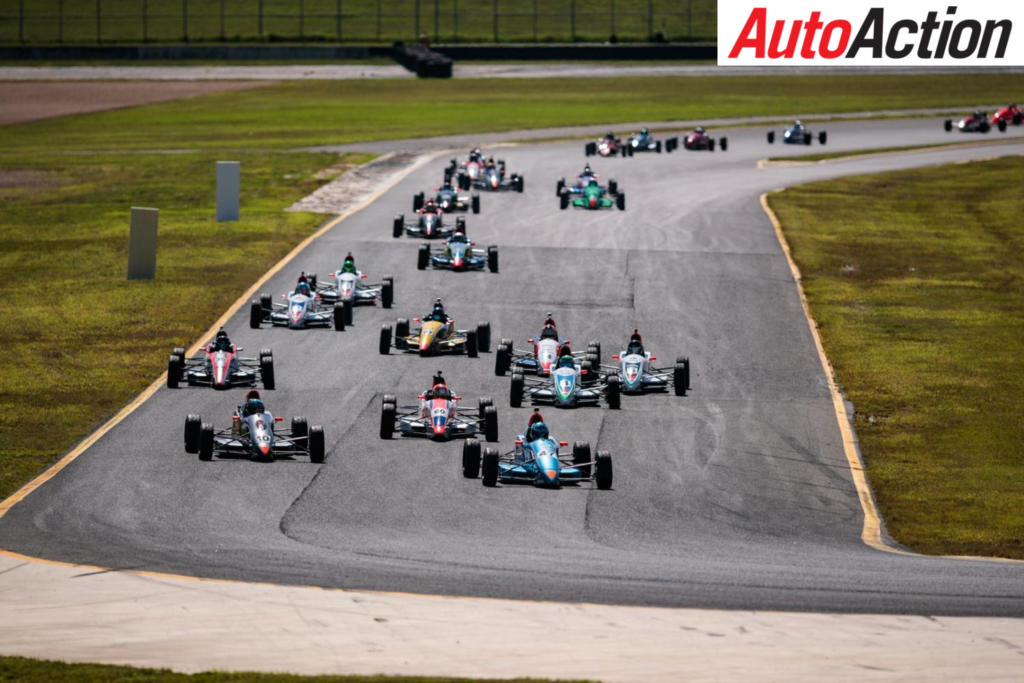
Formula Ford in 2019
In 2019 the series is still strong and in recent years has gone full circle in signing a deal with IndyCar to become part of its Road to Indy program. That partnership has seen the likes of Hunter McElrea and Cameron Shields head over to the United States to pursue a career in American open-wheel racing, and this shows that Formula Ford in Australia is still strong after 50 years of competition.
FORMULA FORD NATIONAL SERIES WINNERS
| Year | Driver | Car |
| 1970 | Richard Knight | Elfin 600 FF |
| 1971 | Larry Perkins | Elfin 600 FF |
| 1972 | Bob Skelton | Bowin P4A |
| 1973 | John Leffler | Bowin P4a & Bowin P6F |
| 1974 | Terry Perkins | Elfin 620 FF & Titan |
| 1975 | Paul Bernasconi | Mawer 004 |
| 1976 | Richard Carter | Birrana F73 |
| 1977 | John Smith | Bowin P4A |
| 1978 | John Wright | Bowin P4A |
| 1979 | Russell Norden | Mawer 004 |
| 1980 | Stephen Brook | Lola T440 |
| 1981 | Phillip Revell | Lola T440 |
| 1982 | Jeff Summers | Elfin 620B |
| 1983 | Bruce Connolly | Galloway & Van Diemen |
| 1984 | Ron Barnacle | Royale RP31 |
| 1985 | Tomas Mezera | Reynard FF83 & Elwyn 003 |
| 1986 | Warwick Rooklyn | Elwyn 003 |
| 1987 | Peter Verheyen | Van Diemen RF86 |
| 1988 | David Roberts | Van Diemen RF86 |
| 1989 | Mark Larkham | Van Diemen RF89 |
| 1990 | Russell Ingall | Van Diemen RF90 |
| 1991 | Troy Dunstan | Van Diemen RF91 |
| 1992 | Cameron McConville | Van Diemen RF92 |
| 1993 | Craig Lowndes | Van Diemen RF93 |
| 1994 | Steven Richards | Van Diemen RF94 |
| 1995 | Jason Bright | Van Diemen RF95 |
| 1996 | David Besnard | Van Diemen RF96 |
| 1997 | Garth Tander | Van Diemen RF95 |
| 1998 | Adam Macrow | Spectrum 06 |
| 1999 | Greg Ritter | Mygale SJ98 |
| 2000 | Luke Youlden | Mygale SJ2000 |
| 2001 | Will Davison | Van Diemen RF01 |
| 2002 | Jamie Whincup | Van Diemen RF01 |
| 2003 | Neil McFadyen | Stealth Van Diemen RF94 |
| 2004 | David Reynolds | Van Diemen RF04 |
| 2005 | Daniel Elliott | Van Diemen RF05 |
| 2006 | John Martin | Spectrum 011 |
| 2007 | Tim Blanchard | Mygale SJ07A |
| 2008 | Paul Laskazeski | Spectrum 011b |
| 2009 | Nick Percat | Mygale SJ07A |
| 2010 | Chaz Mostert | Spectrum 012 |
| 2011 | Cameron Waters | Mygale SJ10A |
| 2012 | Jack Le Brocq | Mygale SJ12A |
| 2013 | Anton de Pasquale | Mygale SJ13A |
| 2014 | Thomas Randle | Mygale SJ13A |
| 2015 | Cameron Hill | Mygale SJ10a |
| 2016 | Leanne Tander | Mygale SJ10a |
| 2017 | Max Vidau | Mygale SJ1019 |
| 2018 | Hunter McElrea | Mygale SJ010a |
FROM KENT TO DURATEC
FROM THE very first Australian race in 1969, the national Formula Ford championship and the state level championships all ran the 1600cc Ford “Kent” engine.
This engine was the mainstay of the category until a change in 2006, when the national series moved to the more modern Duratec Ford Fiesta engine.
The “Kent” powered cars continued to race at state level but in a different class titled Formula Ford 1600, as the Duratec produced 18kW more than the earlier Kent engine.
“When it was ultimately decided to go Duratec, they set up AFFM (Australian Formula Ford Management) and that was funded by Ford until the end of 2012. Then when Ford pulled out of the whole thing, we preserved at the Association and kept going,” explained John van Leeuwen.
Many drivers now make the step out of karting into the Formula Ford 1600 class, before moving up to a Duratec-powered Formula Ford to fight for state or national titles.
Article originally published in Issue 1766 of Auto Action.
For Auto Action’s most recent features, pick up the latest issue of the magazine, on sale now. Also make sure you follow us on social media Facebook, Twitter, Instagram or our weekly email newsletter for all the latest updates between issues.

